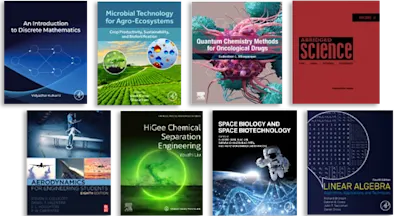
Exoplanet Detection Methods
Uncovering the Evolution of Planetary Systems
- 1st Edition - January 1, 2026
- Latest edition
- Editor: Camilla Danielski
- Language: English
Exoplanet Detection Methods: Uncovering the Evolution of Planetary Systems is a comprehensive guide that delves into modern techniques for detecting exoplanets. It explores curren… Read more

Beyond methodological insights, the book includes online proposal case studies, curated lists of resources, and further detailed step-by-step methods. This makes it an indispensable companion for those venturing into exoplanetary studies or working on planetary demographics.
- Includes chapters that follow a template for ease of reference and method comparison, covering methods, demographics of planets, example dataset analysis, and tables of available instrumentation
- Provides concise, guided methodology as well as expanded, elucidated versions of each method online
- Considers current and future challenges for each method and discusses the use of ML and AI in improving detection accuracy
- Presents detailed tables of available instrumentation and lists of resources for each method
1. Introduction
1.1. General short introduction
1.2 Historical overview on the search for exoplanets
1.3 Book purpose and description of book content (this section name will be different).
2. Radial velocity
2.1 Introduction
2.2 Method description
2.3 Demographics of the detected planets
2.4 Example of analysis of dataset
Table of available spectrographs (N or S hemisphere, Mirror size, typical Resolution)
Table of available open source tools
3. Transit photometry
3.1 Introduction
3.2 Method description
3.3 Demographics of the detected planets
3.4 Example of analysis of dataset
Table of available photometers.
4. Direct imaging and interferometry
4.1 Introduction
4.2 Method description
4.3 Interferometry
4.4 Demographics of the detected planets
4.5 Example of analysis of dataset
Table of available instruments (current and future)
5. Microlensing
5.1 Introduction
5.2 Method description
5.3 Demographics of the detected planets
5.4 Example of data analysis
Table of available instruments
6. Astrometry
6.1 Introduction
6.2 Method description
6.3 Demographics of the detected planets
6.4 Example of data analysis.
Table of available instruments
7. Transit time variation
7.1 Introduction
7.2 Method description
7.3 Demographics of the detected planetary systems
7.4 Example of data analysis
Table of available instruments.
8. Other Detection Methods
8.1 Gravitational waves
8.2 Infrared excess
8.5 Orbital phase modulations
9. Machine Learning and Exoplanets
9.1 Introduction
9.2 Overview of ML techniques
10. Future Perspectives
10.1. Future observatories
10.2 Development of data analysis through AI techniques
- Edition: 1
- Latest edition
- Published: January 1, 2026
- Language: English
CD
Camilla Danielski
Dr Camilla Danielski is an Italian and Brazilian astrophysicist currently working at the Instituto de Astrofísica de Andalucia (Granada, Spain). She is Science Coordinator of the Planetary detection ESA-LISA L3 mission; the Stellar characterisation ESA Ariel M4 mission working group; and the Stellar Characterisation Ariel Consortium working group. Her research is focused on the long-term evolution of planetary systems, from their formation till the last moments of their life, in the framework of Galactic environment and evolution. Dr Danielski has given dozens of invited lectures and talks, and numerous seminars on the science of exoplanets.